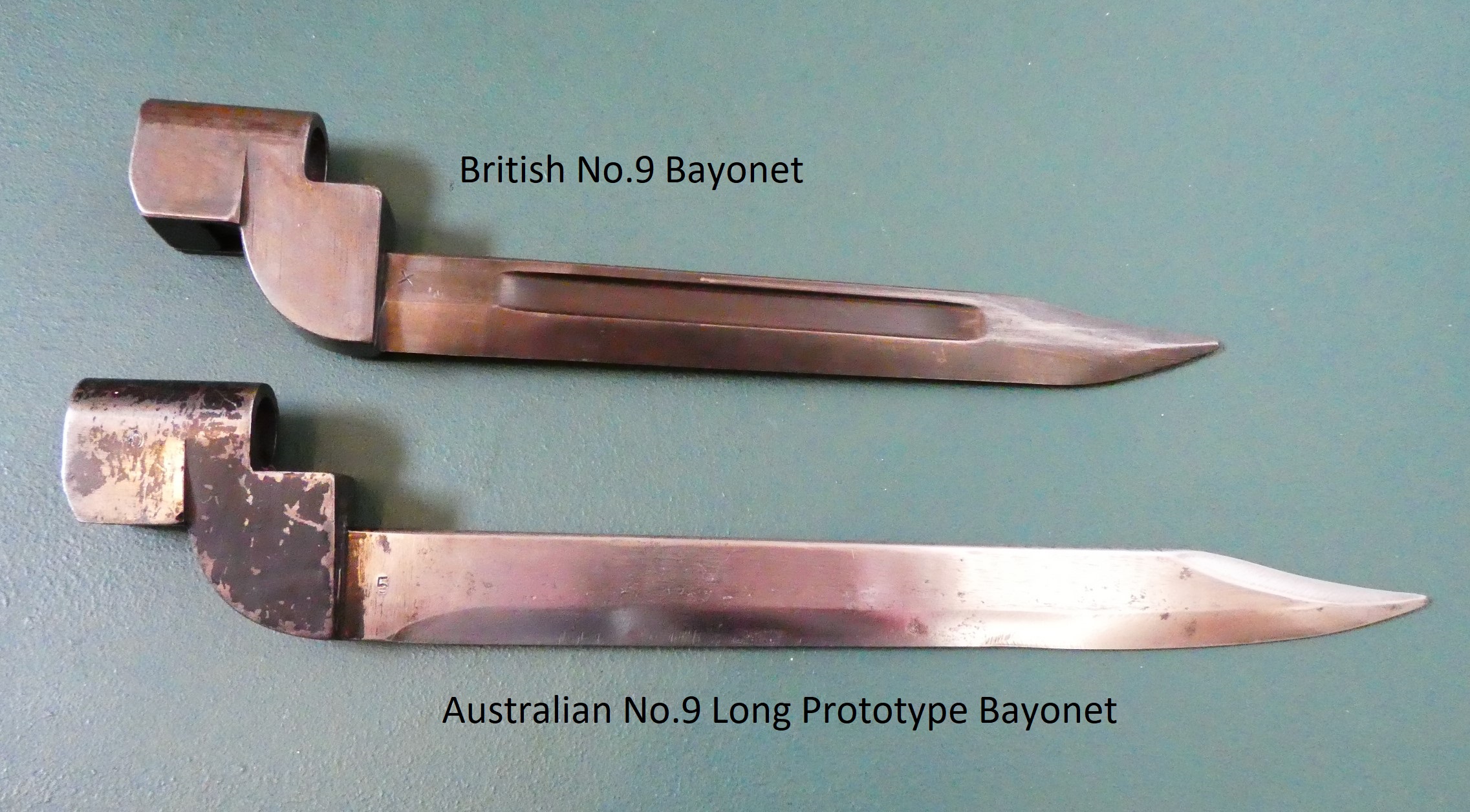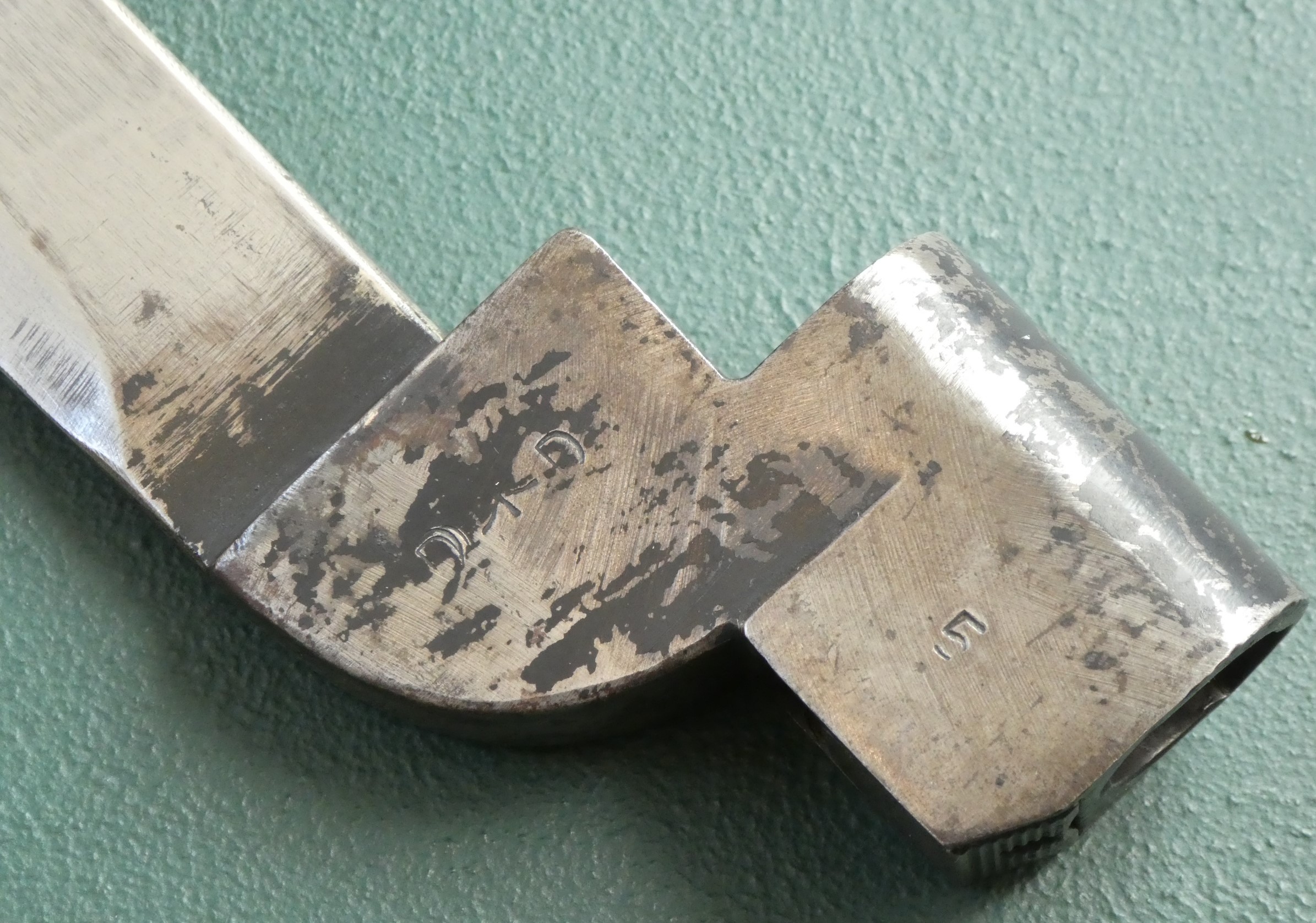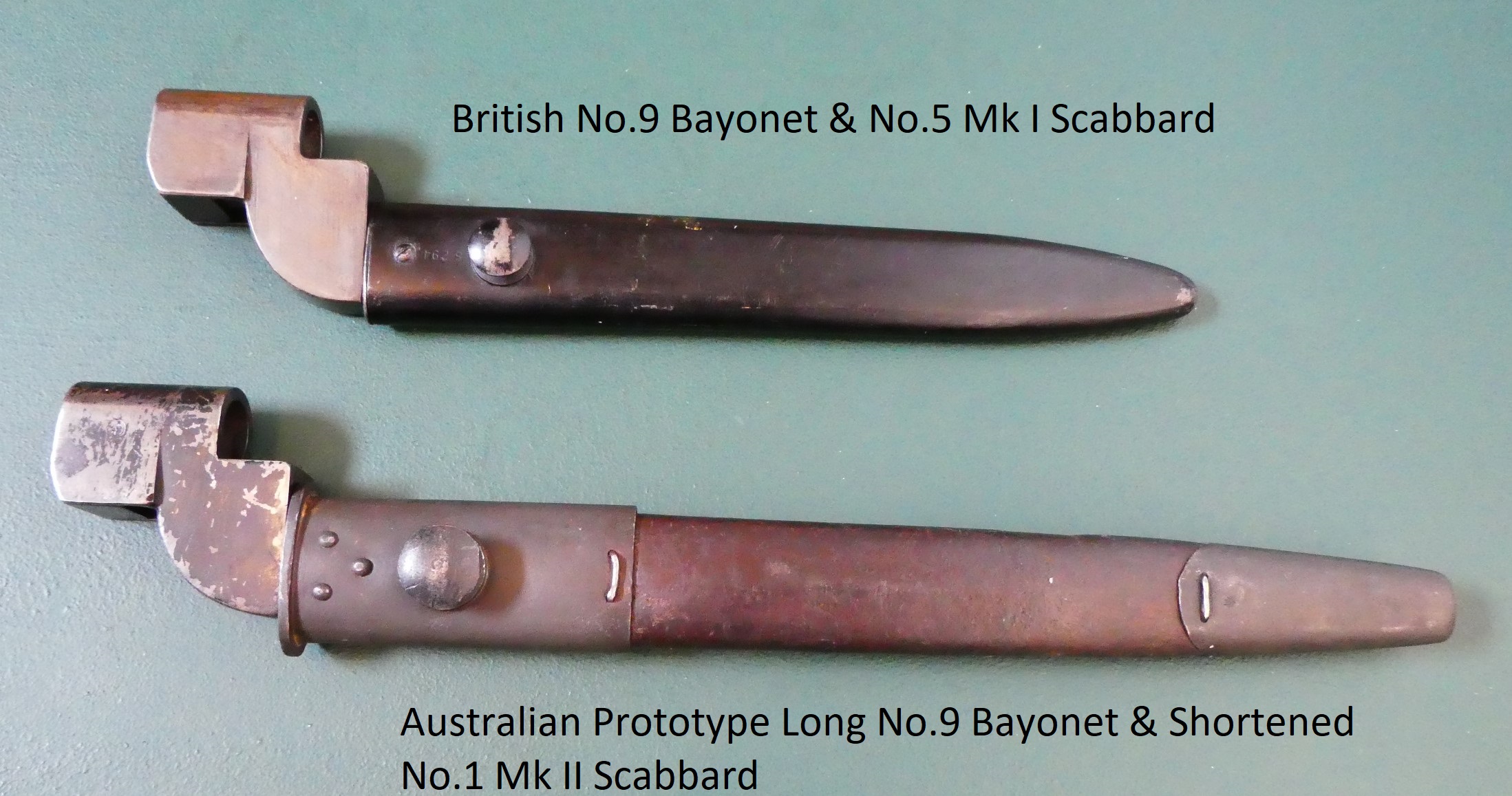Rare Australian Prototype Bayonet
Posted: 20/10/20 (14:19pm)I hope that this blog finds you all well. Finding things to blog about has not been easy of late. All our lives and daily routines have been discombobulated by Covid-19.
But now, I truly have something to get excited about! I have come into possession of an extremely rare bayonet and thought it would be worth sharing it and my observations. In the absence of an official designation, I am calling this bayonet the "Australian No.9 Long Prototype Bayonet."

It is thought that these prototype bayonets were made in the 1950’s. Little more is known about them as so few were made and no official documentation has been released.
Ian Skennerton & Robert Richardson in their book, “British and Commonwealth Bayonets,” describe this bayonet in the “miscellaneous” section, suggesting that its origins are “unknown.” It is interesting to note their interpretation of the socket block marking as being DAD, when in fact it is D^D, the Australian Defence Department mark.

The Australian Department of Defence stamps and Mk1, Owen type scabbard indicate that this was clearly an Australian project.
The 250mm Bowie style blade has a slightly rounded spine terminating in a sharpened clip-point. The un-fullered blade has an “apple seed” grind to the edge. The forte of the blade is stamped with the numeral 5, which probably indicates the 5th Military District (Western Australia).
The blackened steel socket is the same as that of the British No.9 bayonet. The muzzle ring diameter is 15.2mm. The right side of the socket block bears the Australian Defence Department stamp of an arrow within a capital D. The left side of the socket block is deeply struck with another numeral 5 and another Australian Defence Department stamp, the previously mentioned two capital D’s with an arrow between.
The top of the locking catch plunger bears a British War Department arrow and an Enfield factory stamp. This is the same style of stamp, a capital D incorporating an over stamped E & F that was used on the Enfield produced No.9 bayonets. The front of the block is also stamped with an Enfield factory mark and the inspection number 165. This indicates that the socket block was a British No.9 block made in the UK.
Interestingly, British No.9 bayonets produced by the Enfield factory have the pattern designation, No.9 Mk I and a much larger factory mark as well as the production date stamped on the left side of the block. The absence of these stamps on this block could indicate that although the block itself was produced by the Enfield factory in the UK, its production was specifically for the prototype bayonet at the request of the Australian Defence Department. It would make sense for this to have been the case as the necessary tools and infrastructure to produce the block were already in place in the UK.
The bayonet is sheathed in a shortened No.1 Mk II scabbard, also known as the Owen scabbard. The locket and chape bear Lithgow factory marks.

As mentioned earlier, I believe that the presence of the Australian Defence Department stamps and the use of a shortened Mk 1 Lithgow made scabbard indicate that this is an Australian prototype bayonet loosely based on the British No.9. Why it never went into production is unknown but it is likely that the arrival in the late 1950’s of the new 7.62 NATO cartridge and the Belgian made FN rifles had something to do with it.
Whatever the case, this is an incredibly rare and exciting prototype bayonet from a pivotal period in the history of rifle and bayonet design.

